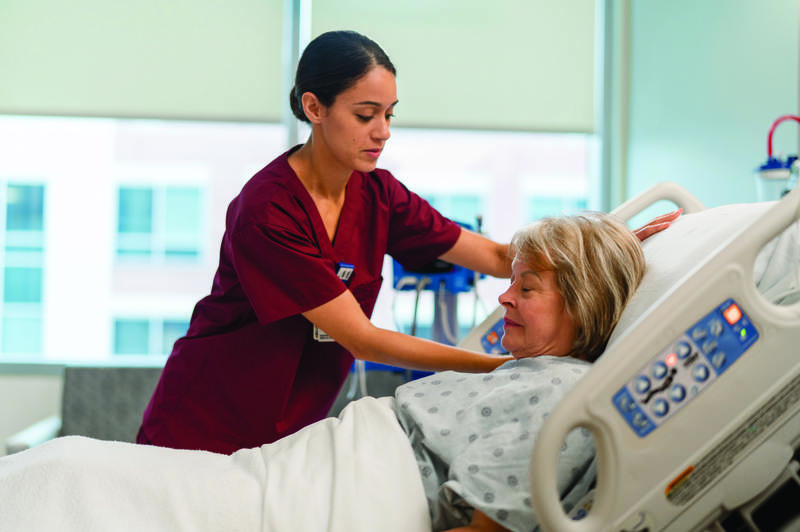FROM OUR TEAMS
The Importance of Patient Satisfaction at the Bedside
2 MIN READ

By Rosario Alvarado, MSN, RN, CCRN-K
By Rosario Alvarado, MSN, RN, CCRN-K

In 1985, Press Ganey created a survey to help motivate hospitals and providers to improve patient satisfaction. Other firms like Gallop, NRC, and HealthStream later joined. This trend led the federal government to create the Hospital Consumer Assessment of Healthcare Providers and Systems (HCAHPS). In 2002, the Centers for Medicare and Medicaid Services (CMS) and the Agency for Healthcare Research & Quality (AHRQ) collaborated to develop, test, and research the HCAHPS survey. The first public HCAHPS scores were published in March 2008. The key topics of the HCAHPS survey include:
• Communication with doctors
• Communication with nurses
• Responsiveness of hospital staff
• Pain management
• Communication about medicines
• Discharge information
• Cleanliness of the hospital environment
• Quietness of the hospital environment
Patient Satisfaction vs. Patient Experience
Patient satisfaction and patient experience sound very similar; however, patient satisfaction and patient experience are NOT the same. Patient satisfaction is about whether the patient’s healthcare expectations were met during the encounter. Meanwhile, patient experience is determined by measuring how often something that should have occurred during their hospital stay happened. Patients are satisfied when they experience great care!
There are several ways to improve patient experiences. The first and most important way is through effective communication by providing information about their condition, treatment, and possible outcomes. Remember to be empathetic towards patients and have a good attitude while caring for patients. Taking just a few moments to connect with patients and sit with them can show patients that you genuinely care about their well-being.
Providing prompt responses to their questions, concerns, and complaints will also make their experience even better. Addressing the 4 Ps - pain, potty, position, and possessions - during hourly rounds will allow for consistency for the patient. While doing hourly rounds, ensure that the environment is safe, quiet, and clean to help promote healing, rest, and sleep.
Also, consider that the teamwork and collaboration present as the patient is cared for is noticeable and can help the patient feel like every member of the team is working together. This may also involve including the family members in the patient’s care and acknowledging their importance in the patient’s well-being.
Contact us at CNREPHelp@houstonmethodist.org
Questions or comments?
© 2021. Houston Methodist, Houston, TX. All rights reserved.


In this
issue

WELCOME
NURSING SCIENCE
EDUCATION
PRACTICE

Does Using the "4M's Framework: What Matters Most" Improve Patient Satisfaction?

Mary E. Mahoney Simulation Center
PROFESSIONAL DEVELOPMENT
FROM OUR TEAMS

EKG Puzzler

The Importance of Patient Satisfaction at the Bedside

PCA Academy

Patient Safety, Satisfaction & the UAA

ABOUT DISCOVERN







